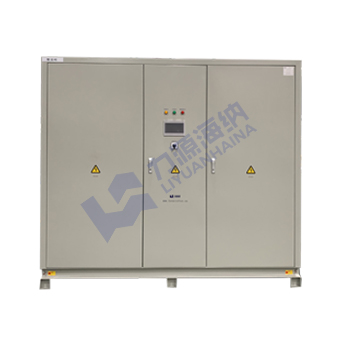Products
Industries
Basic principle of rectifier for electrolytic hydrogen production:
Electrolysis of water to produce hydrogen is the process of using electrical energy to decompose water molecules into hydrogen and oxygen. In the electrolyzer, water is decomposed into hydrogen and oxygen, and these gases are collected on the electrodes. The function of the rectifier for electrolytic hydrogen production is to convert the alternating current of the power grid into the direct current required by the electrolyzer.
Types of rectifiers for electrolytic hydrogen production
1.SCR:
The thyristor rectifier is a power control appliance based on thyristors, also known as silicon-controlled rectifiers. Its basic principle is to use the unidirectional conductivity of the diode to convert alternating current into pulsating direct current. Thyristors add a gate on the basis of diodes, and can control the conduction time through the gate trigger signal to achieve rectification and adjust the DC output.
Thyristor rectifiers have the advantages of mature application, low investment, high efficiency, and good reliability. They are suitable for stable power grids and small-volume, low-power electrolyzers.
2.IGBT rectifier:
IGBT rectifier is a fully controlled rectifier with the characteristics of high withstand voltage, low conduction voltage and fast switching speed. IGBT rectifier can perfectly adapt to the new energy grid, with fast response speed and high comprehensive conversion efficiency. It is suitable for wind power photovoltaic hydrogen production projects with power fluctuations, as well as large-volume and high-power electrolyzers.
Advantages of electrolytic hydrogen rectifier
Summary
The electrolytic hydrogen rectifier is one of the core power equipment for realizing electric hydrogen coupling, and is mainly used to convert the AC power of the grid into the DC power required by the electrolyzer. Thyristor rectifiers and IGBT rectifiers are two main types, each with its own advantages and application scenarios. With the rapid development of renewable energy and green hydrogen production industries, IGBT rectifiers are gradually becoming a trend of future development due to their advantages such as grid friendliness and fast power response speed.
